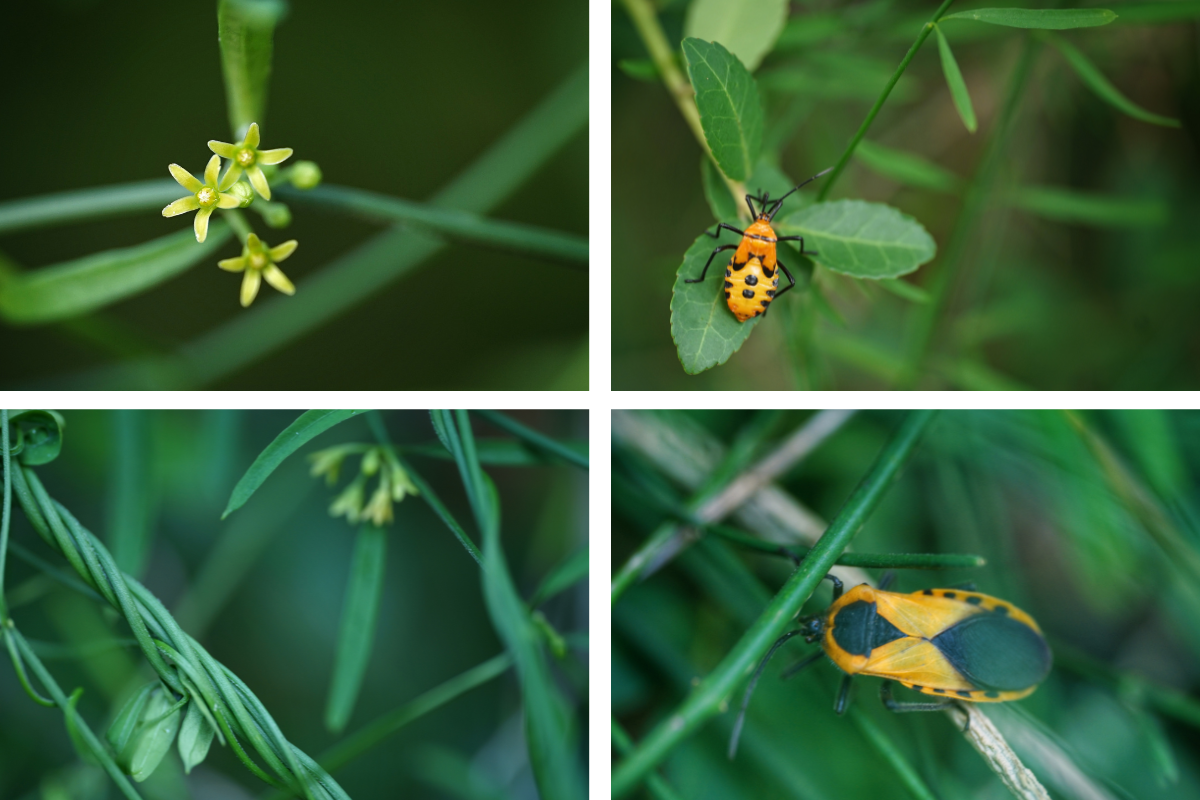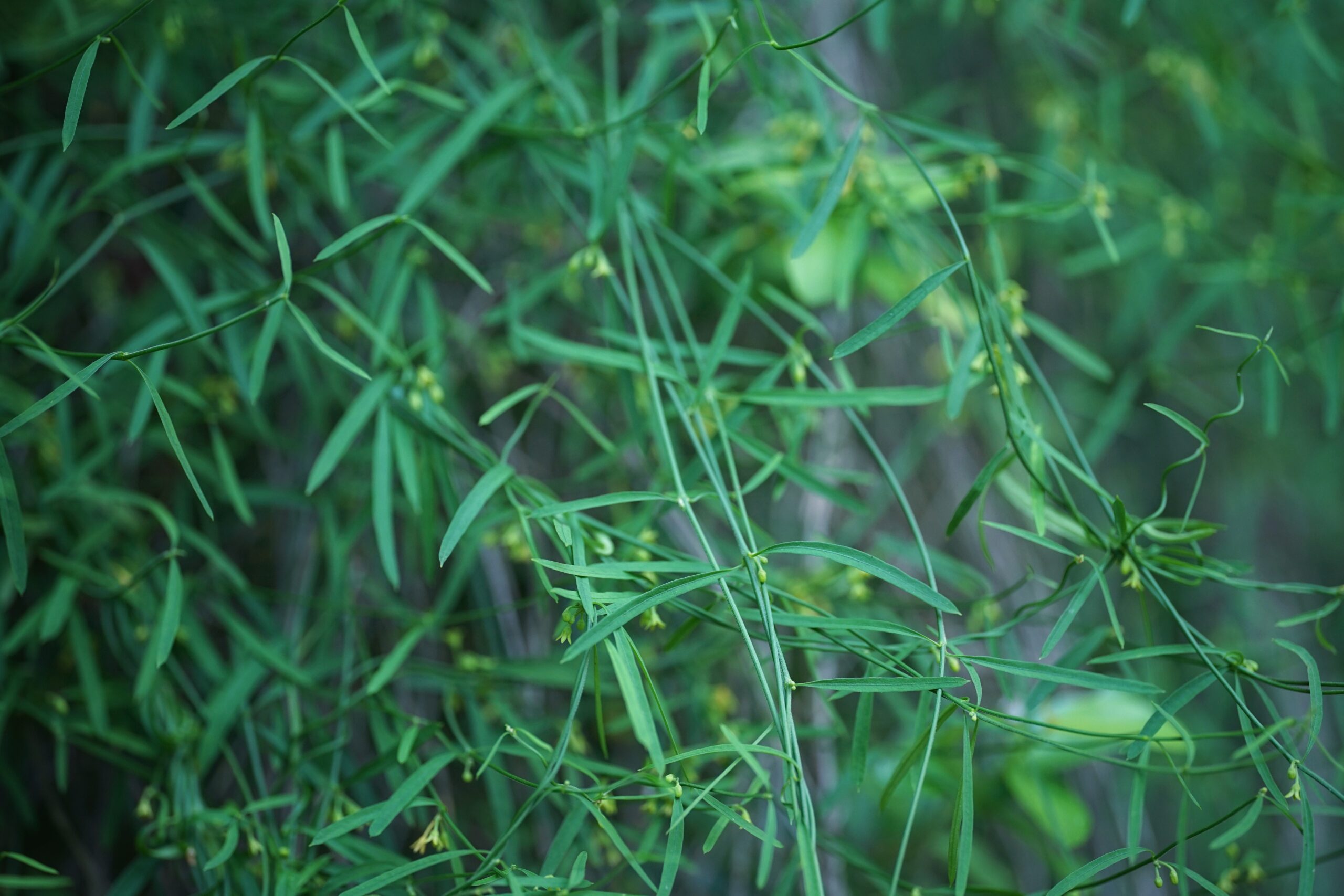Leafless swallowwort
Pictured above: Leafless swallowwort (Orthosia scoparia) by Emily Bell. Click on terms for botanical definitions. View post as a PDF.
Leafless swallowwort is a strange little vine that occurs along the edges of upland to coastal hammocks and floodplain to pineland forests. It may go unnoticed until you become aware of it, after which you may begin to see it everywhere. It starts out very leafy in the understory, but as it grows and emerges into the sunlight, it drops its leaves, hence the “leafless” reference in its common name. The vines twine to create a thick rope-like presence that can overtake small shrubs and trees.
This herbaceous vine grows to around 10 feet long. Leaves are opposite and narrow, around 2–4 cm in length. Clusters of 3-5 very small, pale yellow flowers are born at the leaf nodes. The flower’s pollen is clumped into a pollen-mass that facilitates the transfer of thousands of grains of pollen in a single pollination event. The plant contains a toxic milky white sap characteristic of many plants in the Apocynaceae family, including milkweeds.

This plant is the sole larval host for the Giant milkweed bug (Sephina gundlachii), not to be confused with the similarly colored Large milkweed bug (Oncopeltus fasciatus), which hosts on Asclepias species. It is also thought that Leafless swallowwort is a suitable larval host plant for the Faithful beauty moth, Queen butterfly, and other members of the Danainae subfamily like their Monarch butterfly cousins.
Some sources classify this species as Cynanchum scoparium
Family: Apocynaceae (Dogbane family)
Native range: Throughout the peninsula
To see where natural populations of Leafless swallowwort have been vouchered, visit florida.plantatlas.usf.edu.
Hardiness zone: 8A–11B
Lifespan: Perennial
Soil: Sandy, well drained
Exposure: Partial shade to full sun
Growth habit: Twining herbaceous vine
Propagation: Seed, cuttings
Leafless swallowwort is not commercially available. Visit a natural area to see it.

